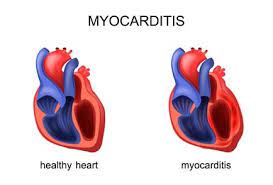Wearable Health Technology: Tracking Wellness in Real Time

In recent years, wearable health technology has evolved from a niche innovation into a mainstream tool for monitoring and enhancing wellness. With advancements in technology, these devices now offer a wealth of features that provide real-time insights into various aspects of our health. From tracking physical activity to monitoring vital signs, wearable health technology is reshaping how we approach personal wellness.
The Evolution of Wearable Health Devices
Wearable health technology has come a long way since the introduction of basic fitness trackers. Early devices primarily measured steps and estimated calories burned. Today, advancements in sensors and data analytics have expanded the capabilities of these devices significantly. Modern wearables, such as smartwatches and fitness trackers, can now monitor heart rate, sleep patterns, oxygen levels, and even stress levels.
The integration of advanced sensors and algorithms allows these devices to provide a more comprehensive view of an individual’s health. For example, many smartwatches now include electrocardiogram (ECG) functionality, enabling users to monitor their heart’s rhythm and detect potential irregularities. This evolution reflects a broader trend towards more sophisticated, multifunctional health monitoring tools.
Key Features and Benefits
- Continuous Health Monitoring
One of the primary benefits of wearable health technology is the ability to monitor various health metrics continuously. This real-time tracking allows users to gain insights into their daily activity levels, sleep quality, and overall wellness. For instance, devices like the Apple Watch and Fitbit provide real-time heart rate monitoring, helping users stay informed about their cardiovascular health throughout the day. - Personalized Health Insights
Wearable health technology offers personalized feedback based on individual data. For example, some devices use machine learning algorithms to analyze patterns in a user’s activity and provide tailored recommendations. These insights can help users make informed decisions about their lifestyle, such as adjusting their exercise routines or improving sleep habits. - Emergency Alerts and Health Notifications
Advanced wearables come equipped with features that can alert users to potential health issues. Some devices can detect irregular heartbeats or falls and automatically send alerts to emergency contacts or medical professionals. This capability is particularly valuable for individuals with chronic conditions or those at risk of sudden health events. - Integration with Health Apps and Platforms
Many wearables sync with health apps and platforms, allowing users to view and analyze their data in greater detail. This integration can provide a holistic view of one’s health, combining data from multiple sources such as diet apps, exercise logs, and medical records. Platforms like Apple Health and Google Fit aggregate data from various devices, offering a comprehensive overview of an individual’s wellness.
Real-World Applications
Wearable health technology has practical applications in various areas of health management. For instance:
- Fitness and Exercise: Athletes and fitness enthusiasts use wearables to track their performance, monitor progress, and set goals. Devices with GPS functionality can provide detailed insights into running routes and exercise intensity.
- Chronic Disease Management: Wearables can assist in managing chronic conditions by continuously monitoring relevant health metrics. For example, individuals with diabetes can use glucose monitors integrated into wearables to track blood sugar levels in real time.
- Mental Health: Some devices are equipped with features to monitor stress levels and provide relaxation techniques. By tracking physiological responses to stress, wearables can help users manage their mental well-being more effectively.
Privacy and Security Considerations
As with any technology that collects personal data, privacy and security are critical concerns. Wearable health devices gather sensitive information, making it essential for users to be aware of how their data is stored and shared. Reputable manufacturers implement robust security measures, such as encryption and secure data storage, to protect user information. However, users should review privacy policies and settings to ensure their data is handled according to their preferences.
Conclusion
Wearable health technology has transformed how we approach personal wellness by providing real-time, actionable insights into various aspects of our health. From continuous monitoring and personalized feedback to emergency alerts and comprehensive health management, these devices offer significant benefits. As technology continues to advance, the potential for wearables to enhance our understanding and management of health will only grow. By staying informed and choosing reputable devices, users can leverage wearable technology to improve their overall well-being and quality of life.







